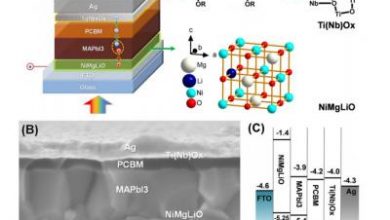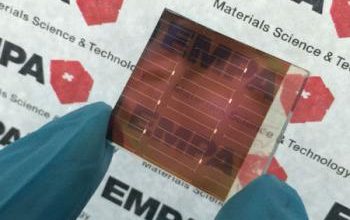Perovskites can work together with QDs to improve LED and solar technologies
Dyesol gets ready to launch a Major Area Demonstration Prototype for its perovskite PV technology
Researchers from the Universitat Jaume I and the Universitat de València have studied the interaction of two materials, halide perovskite and quantum dots, revealing significant potential for the development of advanced LEDs and more efficient solar cells.
The researchers quantified the “exciplex state” resulting from the coupling of halide perovskites and colloidal quantum dots. Both known separately for their optoelectronic properties, but when combined, these materials yield longer wavelengths than can be achieved by either material alone, plus easy tuning properties that together have the potential to introduce important changes in LED and solar technologies.
Quantum dots (QDs) are a family of semiconductor materials with very interesting light-emitting properties, including the ability to tune what wavelengths light is emitted at. They are also useful in both LEDs and solar cells. Combining QDs and perovskites creates a new exciplex state in which light can be emitted at much longer wavelengths, reaching well into the infrared spectrum, while also allowing control over its emission color via applied voltage.
Each material âthe perovskite, the QDs and the new exciplex stateâ emits light at a different color, each of which can be weighted within the overall light emission to pick out the desired color. This means LEDs can be designed that emit light over both the visible and infrared spectrum simultaneously, which has applications in the field of telecommunications.
phys.orgPerovskite applicationsQuantum DotsLEDPerovskite SolarTechnical / researchHybrids and related materials
Above are Perovskites can work together with QDs to improve LED and solar technologies web publication,Hope can help you.
Perovskite nanowires and carbon nanotubes make for a highly responsive photodetector’

